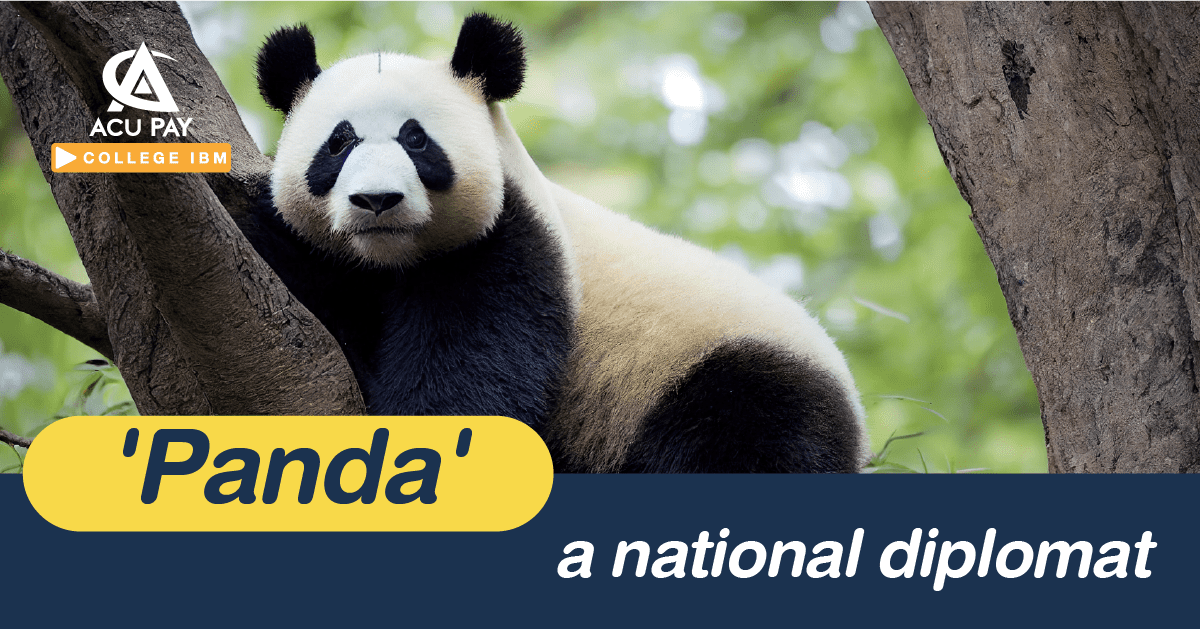

It is believed that when talking about pandas, more than half of Thais will have to think of pandas as ‘Chuang Chuang’, ‘Lin Hui’ and ‘Lin Ping’ along with the song “Jadjadjada da Dada Jadjab,” which was played on every morning new in 10 years ago. At that time, pandas in Thailand went viral, whether it was a ‘Linping’ naming contest, a video clip of baby pandas rolling around every morning or even having a 24-hour tracking channel. Today, ACU PAY is going to explore the panda’s beginnings and why China’s sending pandas to different countries has significant meaning more than just the cuteness of a black and white furry animal.
For China, the panda is a ‘national treasure’ that reflects its elegance, naturalness, harmlessness, and its history with Chinese culture since ancient times. Because of this, the panda has become a ‘diplomatic symbol’ of China.
‘Panda Diplomacy’ has been recorded in Chinese history since the Tang Dynasty when the emperor gave the panda to Japan, the Chiang Kai-shek era gave a pair of pandas to a zoo in the United States in return for their help in the war with Japan before China spaced time for many years because China discovered that China’s giant panda population had fallen to a critical point, causing China to avoid sending pandas.
In 1984, China changed its approach to sending giant pandas to countries under a lease for conservation by sending more than 10 pandas to the United States, the United Kingdom, Japan, France, Germany, Spain, and Mexico. A decade later, pandas became Soft Power representing relationships with those national allies.
Back in 2001, Chavalit Yongchaiyudh (the deputy prime minister at that time) started negotiations to request pandas from China to come to Thailand as a symbol of international goodwill.
Later in October 2003, China sent a pair of giant pandas, named ‘Chuang Chuang’ and ‘Lin Hui’, to Thailand for the first time as Thai-Chinese goodwill ambassadors. It is a 10-year lease contract (and renewal of contract) with Chiang Mai Zoo in charge of both pandas.
Later, Lin Hui gave birth to a female giant panda named ‘Linping’ in May 2009, which was the result of the first artificial breeding in the equatorial country. In the month outside of panda breeding season, it created a panda phenomenon throughout the city.
Four years later, Lin Ping was sent back to China to Chengdu’s Panda Research and Conservation Center for a mate because of Chinese authorities’ requirement that the baby of a giant panda born during the contract is considered Chinese property, and Lin Ping gave birth to twins in 2017.
Later, there was bad news for panda lovers in 2019, when the 19-year-old ‘Chuang Chuang’ passed away due to heart failure. In April 2013, Lin Hui passed away at the age of 21 with an age-related illness. It also ended the legend of a diplomatic panda couple who lived in Thailand for more than 20 years.
In this regard, the panda care budget has spent a lot of money. According to the CWCA’s Panda Conservation Project, which was funded for both phases of the contract and by various agencies since the entry of pando into Thailand, found that Thailand spent at least THB30.59 million on Panda diplomacy in 2021. Meanwhile, Panda diplomacy has helped promote tourism for the zoo. According to Chiang Mai Zoo, from October 2003 to August 2022, the panda exhibition welcomed at least 7.4 million visitors.